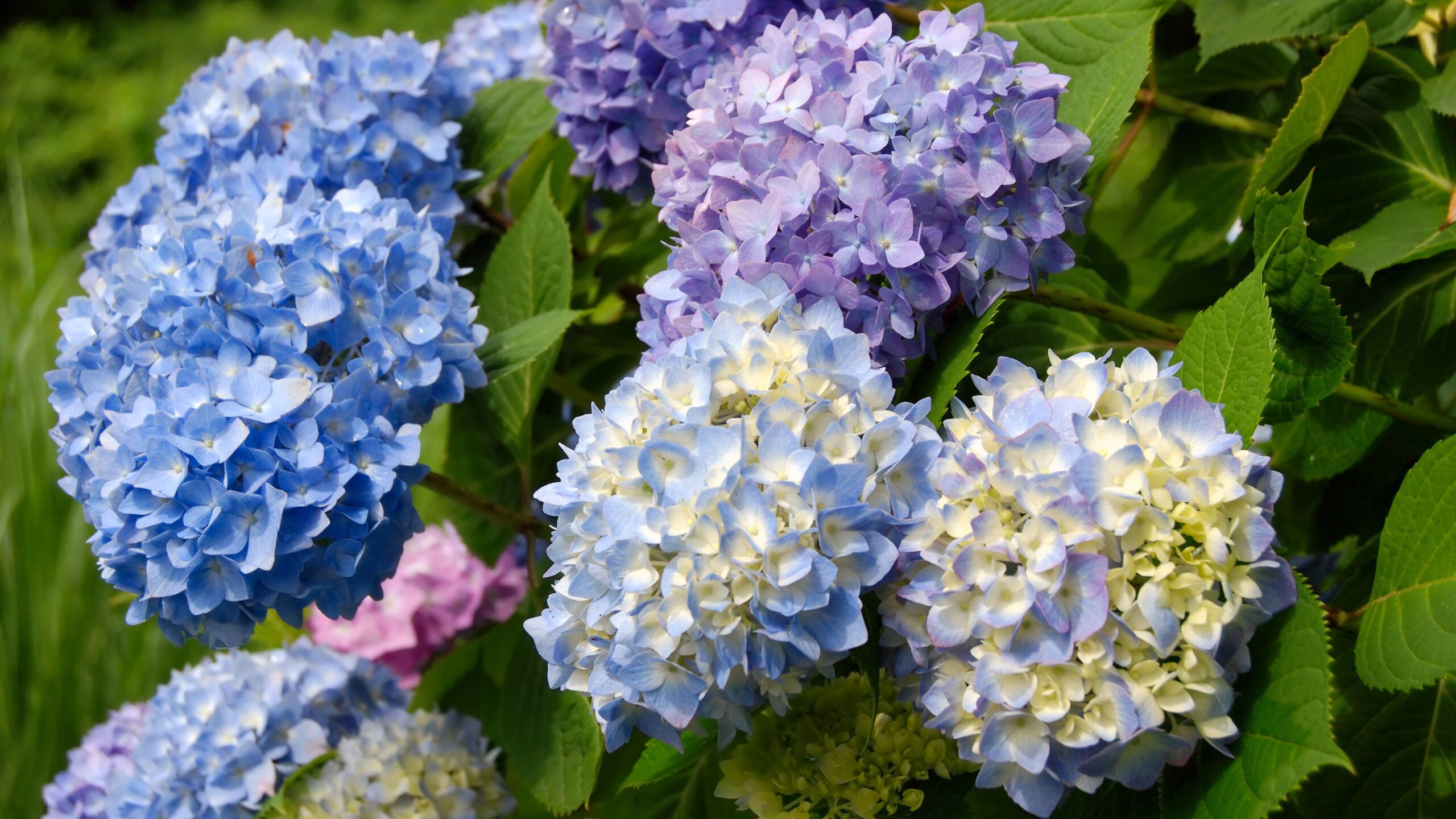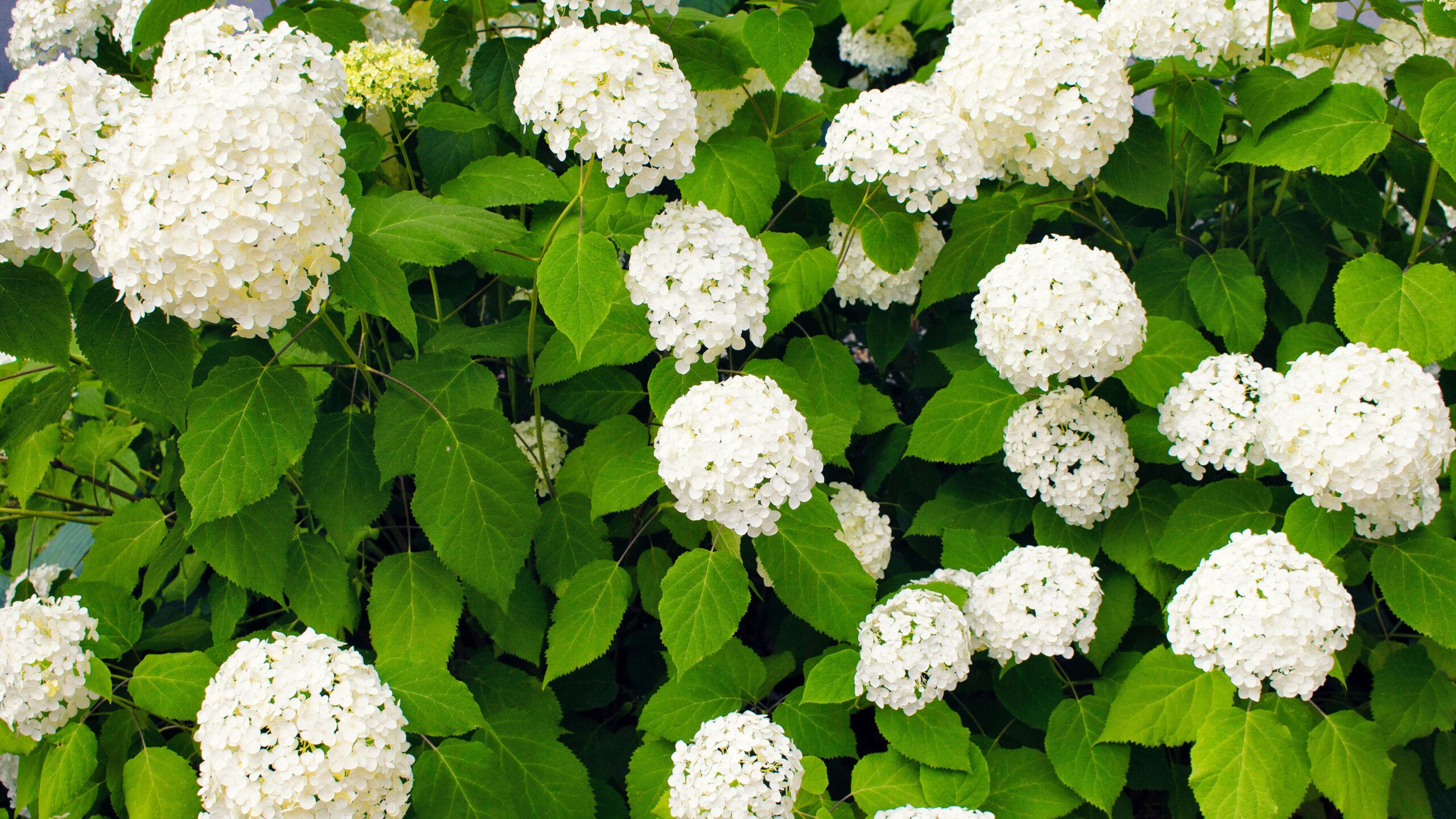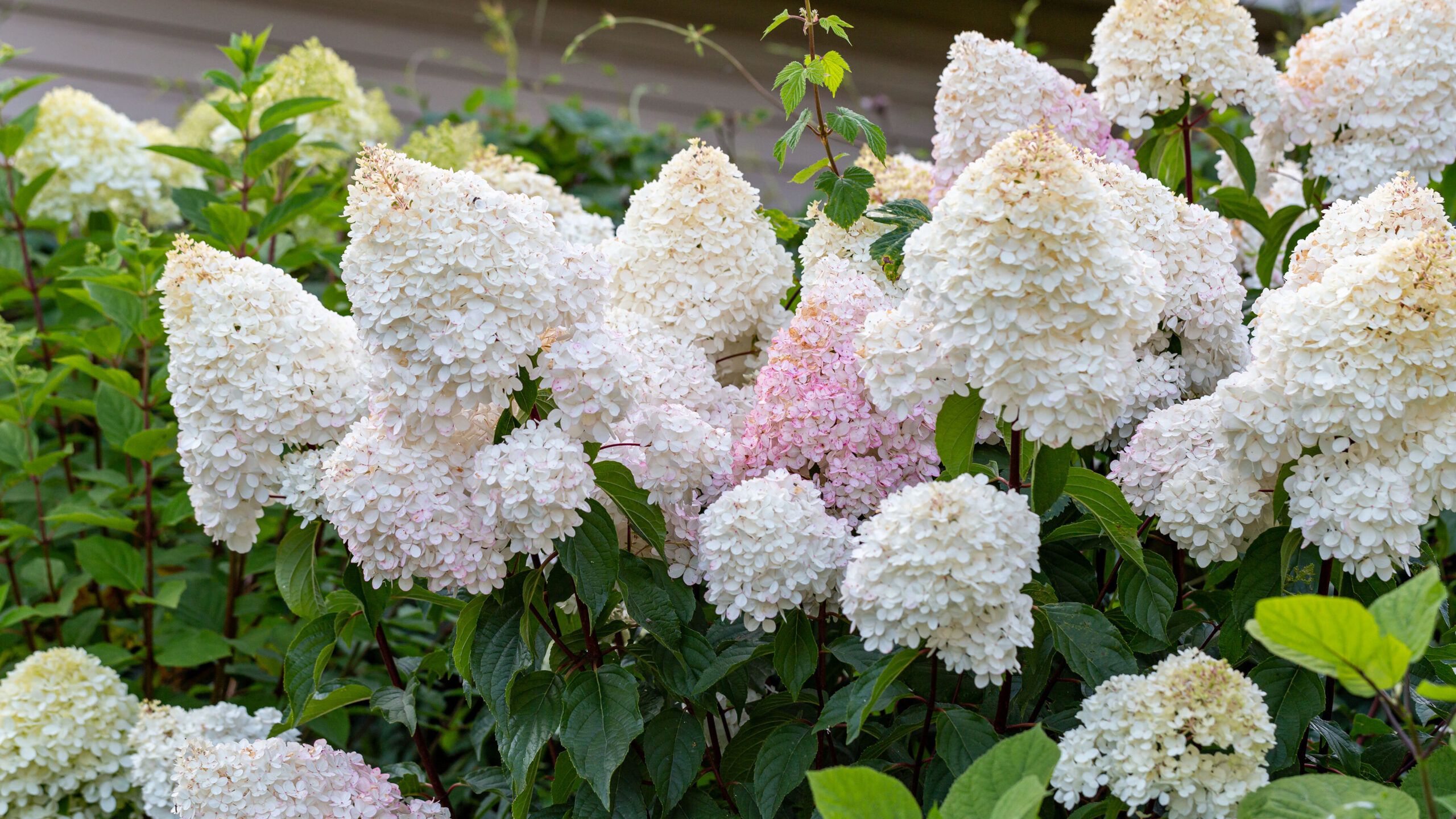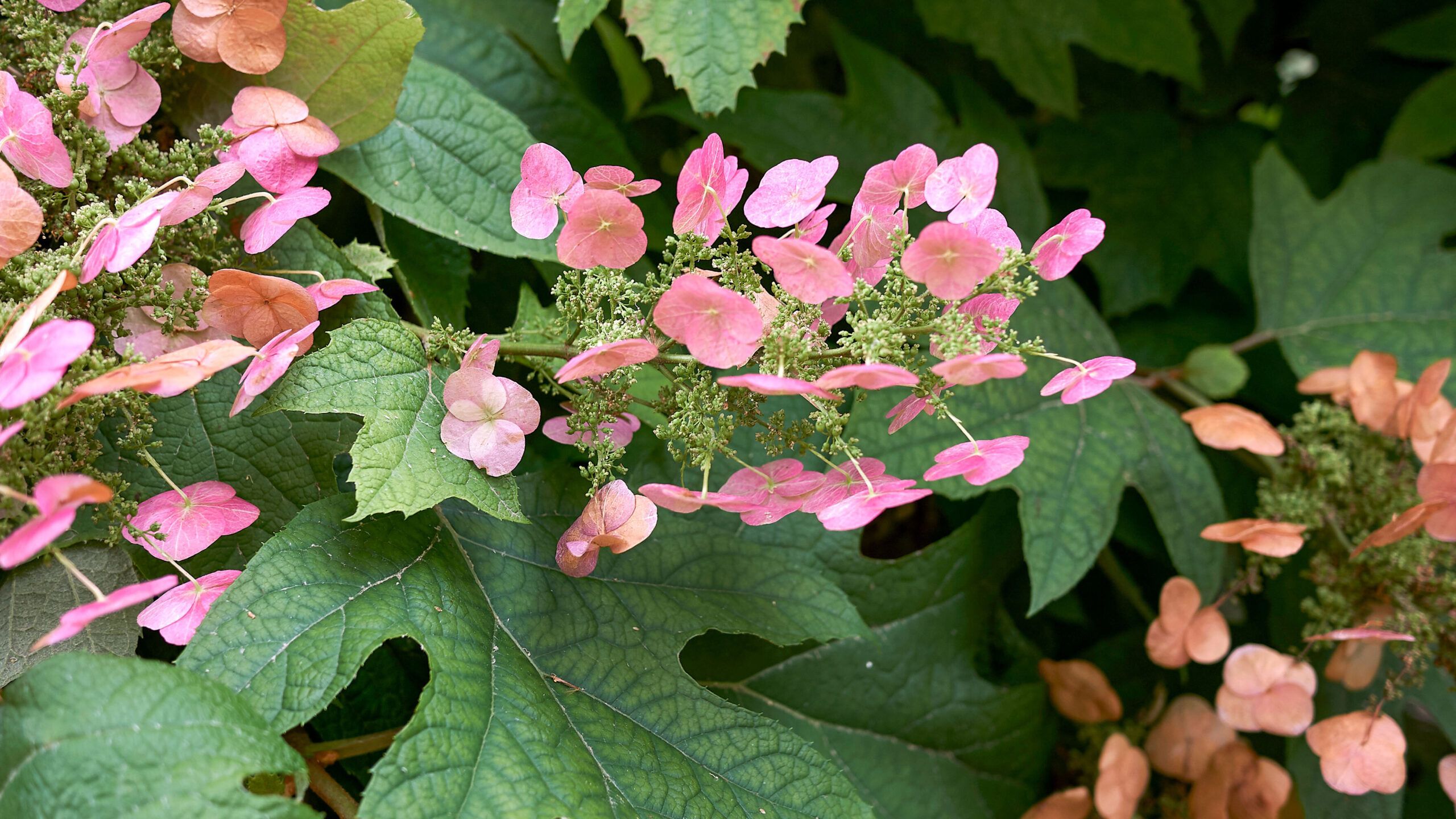We may be compensated if you purchase through links on our website. Our team is committed to delivering honest, objective, and independent reviews on home products and services.
Hydrangeas are beloved for their showy blooms and versatility in the landscape. These hardy flowering shrubs thrive in various soil types and climates, making them a popular choice for gardeners across much of the United States. With their ability to produce stunning flowers in shades of blue, purple, pink, and white, hydrangeas can add a vibrant touch to any garden.
In this video and guide, landscape expert Jenn Nawada shares her knowledge and passion for these beautiful plants, exploring the different types of hydrangeas and how to care for them.
Hydrangea Basics
Hydrangeas are known for their adaptability and striking blooms. These plants typically flourish in partial sun and well-drained soils, making them suitable for climate Zones 4 through 9. This range covers most of the continental United States, except for the far north.
One of the most fascinating aspects of hydrangeas is how their flower color can change based on soil pH. Blue flowers indicate acidic soil, while pink and white blooms suggest more alkaline conditions. This unique characteristic allows gardeners to potentially influence the color of their hydrangea blooms by adjusting the soil pH. Note, however, that white hydrangeas lack the pigment to produce these colors and will always be white no matter the soil composition.
Five Main Types of Hydrangeas
The right time to prune, how to shape, the appropriate sunlight, the best soil, and other factors all depend on the type of hydrangea. Here are the five types of hydrangeas most common in American landscaping.
Bigleaf Hydrangea (Hydrangea Macrophylla)

Bigleaf hydrangeas are the most common type found in gardens, with hundreds of individual cultivars to choose from. They feature two distinct flower head shapes:
- Mophead: Rounded flower clusters
- Lacecap: Flatter flower formations
These hydrangeas typically bloom on old wood, meaning the flower buds form on the previous year’s growth. The best time to prune bigleaf hydrangeas is after the flowers are spent. When pruning, cut just above a healthy set of leaf nodes, where two leaves meet along the main stem.
Smooth Hydrangea (Hydrangea Arborescens)

Smooth hydrangeas, including the popular cultivar Annabelle, are characterized by their smooth-textured leaves and ability to thrive in shaded and dappled light areas. Their flower heads range in color from lime green to white.
One unique feature of smooth hydrangeas is that they can be cut to the ground at the end of the growing season, similar to how you might treat a perennial plant. This makes them an excellent choice for gardeners who prefer low-maintenance plants or those looking to rejuvenate their hydrangeas periodically.
Panicle Hydrangea (Hydrangea Paniculata)

Panicle hydrangeas are distinguished by their cone-shaped flower clusters. Like smooth hydrangeas, their blooms transition from lime green to brilliant white. However, they have the ability to tolerate more sun than other hydrangea types.
The best time to prune panicle hydrangeas is in late winter or early spring, before new leaves emerge. This timing is crucial because panicle hydrangeas bloom on new wood, meaning they produce flowers on the current season’s growth.
These hydrangeas make excellent focal points in the garden and can create stunning hedgerows. Their large, conical blooms provide a dramatic display throughout the summer and into fall.
Oakleaf Hydrangea (Hydrangea Quercifolia)

Oakleaf hydrangeas are named for their distinctive oak-shaped leaves, which create impressive fall foliage in shades of purple, orange, and red. This is one of the earliest blooming hydrangeas, often flowering in June and ending in July. The flowers, which bloom on old wood, range from white to cream to pink.
These native hydrangeas are particularly well-suited for shade gardens. To maintain oakleaf hydrangeas, prune them immediately after flowering by removing spent flower heads. This timing ensures you don’t accidentally remove next year’s flower buds.
Climbing Hydrangea (Hydrangea Petiolaris)

Unlike the shrub forms listed above, climbing hydrangea is a vine that can cover walls, fences, and other structures. Its aerial roots allow the plant to climb and attach to these surfaces. Flat, white flower clusters will bloom from old wood in June and July.
Climbing hydrangeas should be pruned right after flowering to maintain their shape and size without sacrificing next year’s blooms. These plants are excellent for adding vertical interest to the garden and can beautifully soften the appearance of walls or fences.
Caring for Hydrangeas
Proper care is essential for healthy, blooming hydrangeas. While specific care instructions will vary depending on the type of hydrangea, there are some general guidelines to follow.
Watering
Water deeply and regularly, especially during dry spells. Other tips include:
- Ensure soil has plenty of drainage to prevent root rot.
- Apply mulch to retain moisture and regulate soil temperature.
Fertilizing
Consider using a fertilizer specifically formulated for hydrangeas:
- Use a balanced, slow-release fertilizer in spring.
- Avoid over-fertilizing, which can lead to lush foliage but fewer blooms.
Pruning
Timing is vital, and varies by hydrangea type. Ensure you know which type your dealing with before picking up your pruners.
- For most varieties, remove dead or weak stems annually.
- Avoid pruning spring-blooming hydrangeas after midsummer to preserve next year’s flower buds.
Sun Exposure
Most hydrangeas prefer partial sun, with morning sun and afternoon shade.
- Panicle hydrangeas can tolerate more sun than other types.
- In hotter climates, provide more shade to prevent leaf scorch.
Seasonal Care Tips
Adapting your care routine to the seasons ensures your hydrangeas remain healthy year-round. In spring, focus on pruning and fertilization. During summer, maintain consistent watering and monitor for pests. Autumn is ideal for mulching to protect roots during winter.
Common Hydrangea Issues
Even with proper care, hydrangeas might not thrive the way you want them to. Here are some common issues and how to address them:
Lack of Blooms
If your hydrangea isn’t blooming, it could be due to:
- Improper pruning (cutting off flower buds)
- Late spring frosts damaging new buds
- Insufficient sunlight
- Overfertilization with high-nitrogen fertilizers
To encourage blooming, ensure you’re pruning at the right time for your hydrangea type and protect plants from late frosts if possible.
Leaf Discoloration
Yellow or brown leaves might indicate:
- Overwatering or poor drainage
- Nutrient deficiencies
- Sunburn
Adjust watering practices, improve soil drainage if necessary, and ensure your hydrangea is getting the right amount of sun for its variety.
Pest Problems
Common pests include:
- Aphids
- Spider mites
- Scale insects
Regular inspection and prompt treatment with insecticidal soap or horticultural oil can help keep pest problems under control.
Our Conclusion
Hydrangeas offer a stunning array of options for any garden, from compact shrubs to climbing vines. With their adaptability and show-stopping blooms, these versatile plants can enhance various landscape styles. By understanding the different types of hydrangeas and their specific care requirements, you can enjoy these beautiful flowering shrubs in your yard or garden.
Resources
Expert assistance with this segment was provided by Stonegate Gardens (now Weston Nurseries).
